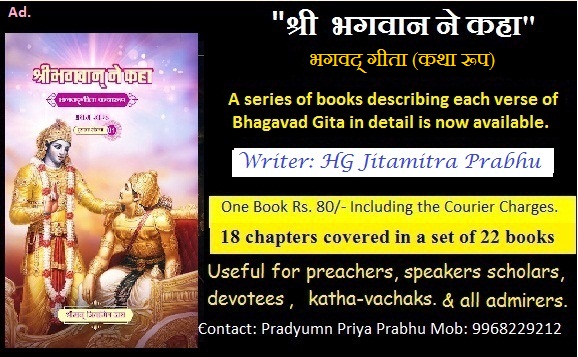Vaishnav Culture of Bishnupur, West Bengal
Vaishnav Culture & Major Temples of Bishnupur, Bengal.
 |
| Madan Gopal Temple Deities |
From around 7th century AD till around the advent of British rule, for around a millennium, history of Bankura district is identical with the rise and fall of the Hindu Rajas of Bishnupur. The ancient Rajas of Bishnupur trace back their history to a time when Hindus were still reigning in Delhi, and the name of the Muslims was not yet heard in India. Indeed, they could already count five centuries of rule over the western frontier tracts of Bengal before Bakhtiyar Khalji arrived.
Adi Malla was the founder of the Malla
dynasty. In 695 AD, a prince of one of the royal families of northern India
made a pilgrimage with his wife to the Jagannath temple at Puri. He left his
wife who was about to give birth to a child in the care of a Brahmin here. The
wife gave birth to a son. When he was 15 years old he had no equal as a
wrestler in the territory all around. It was this that earned him the name of
Adi Malla, the original or unique wrestler. He became a chieftain by the grace
of Raja of Padampur,
He was succeeded by his son, Jay Malla, who invaded
Padampur and captured the fort, then the power-centre. Jay Malla extended his domains and shifted his
capital to Bishnupur. The subsequent kings steadily extended their kingdom.
Bir Hambir, the 49th ruler of the Malla dynasty who flourished
around 1586 AD and ruled in 16th-17th century, was a contemporary of the Mughal
emperor Akbar. But he perhaps paid tributes to Muslim viceroys. Bir Hambir was
both powerful and pious. He was converted to strict Vaishnavism by Srinivasa.
|
There
is mention in two Vaishnava works, Prem-vilasa of Nityananda Das (alias
Balaram Das) and Bhakti Ratnakara of Narahari Chakrabarti, about Srinivasa
and other bhaktas (devotees) being robbed by Bir Hambir, when they were
travelling from Vrindavan to Gaur with a number of Vaishanava manuscripts.
However, Bir Hambir was so moved by Srinivasa's reading of Bhagavata that he
converted to Vaishnavism and gave Srinivasa a rich endowment of land and
money. He introduced the worship of Madan Mohan in Bishnupur. |
His decendents Raghunath Singha, Bir Singha, Durjan Singha, Gopal Singha Dev, Chaitanya Singha Dev etc were devotees of Krishna and so were the civilians. They made many temples in the kingdom.
The Bishnupur Rajas who were
at the summit of their fortunes towards the end of the 17th century, started
declining in the first half of the 18th century. First, the Maharaja of Burdwan
and then the Maratha invasions laid waste their country.
Bishnupur offers beautiful Terracotta
Temples from the 16th Century from the Malla Dynasty. Bishnupur
derives its name from the Lord Vishnu. There are many such temples that stand
testimony to the exquisite craftsmanship of the artisans of the region. The
temples were crafted from the local laterite and brick. The temples are covered
with terracotta tiles depicting scenes from the epic Mahabharata and Krishna
Raas. The temples are located in Bishnupur and across many other small villages
in the Bankura district.
Major Vaishnav Temples of Bishnupur, West Bengal.
|
Rasmancha |
For Krishna |
1600 |
|
|
||
|
Jor-Bangla
Temple |
For Krishna |
1655 |
|
|
||
|
Pancha Ratna Shyamrai Temple |
For Krishna |
1643 |
|
|
||
|
Madanmohan
Temple |
For Krishna |
1694 |
|
|
||
|
Lalji
Temple |
ForKrishna |
1658 |
|
|
||
|
Radhya
Shyam temple |
For Krishna |
1758 |
|
|
||
|
Nandalal
Temple |
For Krishna |
17th Century |
|
|
||
|
Radhavinod
Temple |
For Krishna |
1659 |
|
|
||
|
Madangopal
Temple |
For Krishna |
1665 |
|
|
|
|
|
Murulimohan
Temple |
For Krishna |
1665 |
|
|
||
|
Radha
Govinda Temple |
For Krishna |
1729 |
|
|
||
|
Radha
Madhab Temple |
For Krishna |
1737 |
|
|
||
|
Krishna-Valaram
Temple |
For Krishna- Balram |
|
|
|
||
|
Radha
Vinod Temple |
For Krishna |
1659 |
|
|
||
|
Jor
Mandir (Twin Temples) |
For Krishna |
1726 |
 |
| Radha Vinod Temple |

























